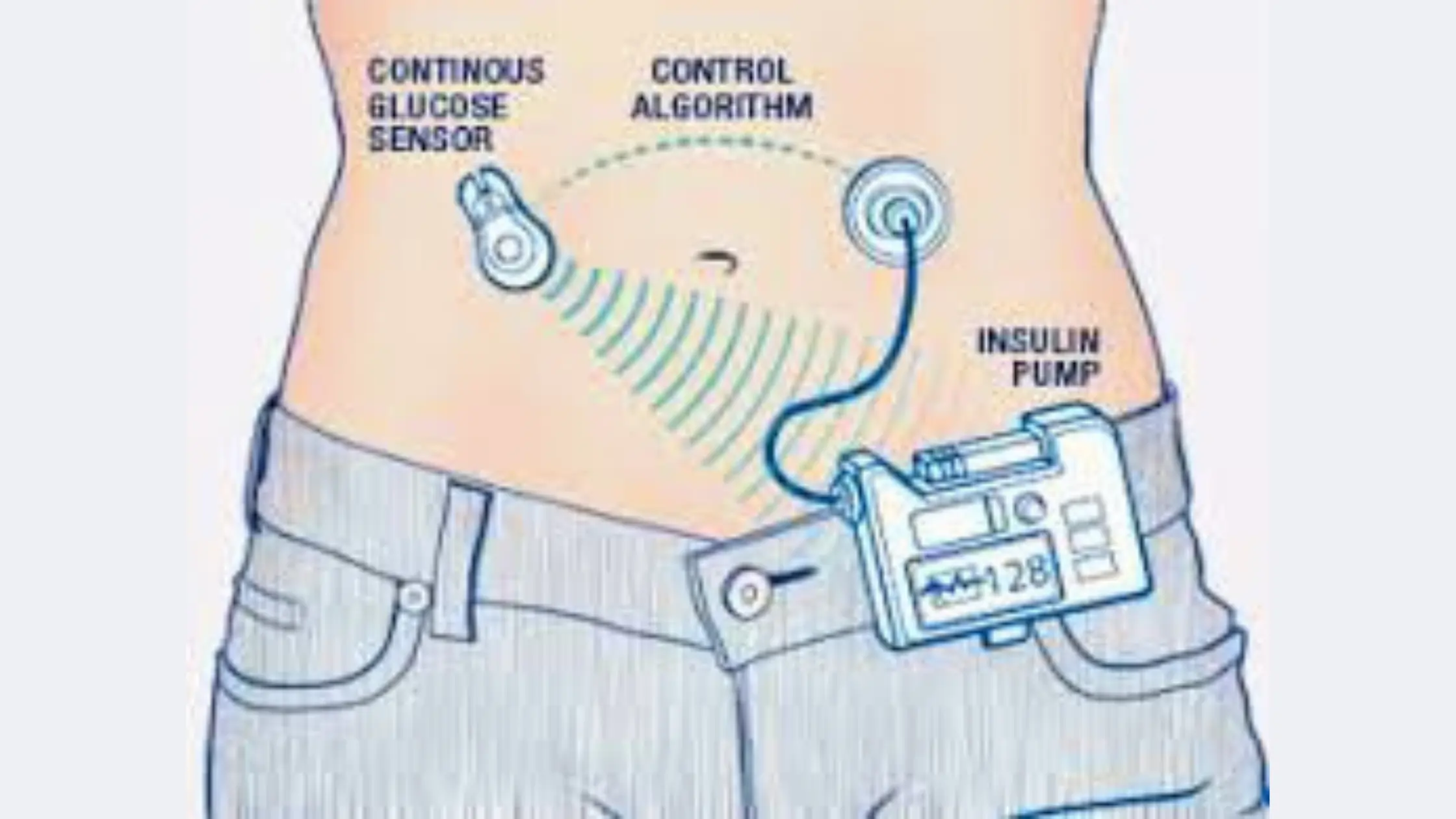Artificial pancreas technology has emerged as a groundbreaking development in the management of diabetes. It offers new hope to individuals diagnosed with diabetes, empowering them to better control their blood sugar levels and improve their quality of life. In this article, we will explore the evolution, functionality, benefits, and future prospects of artificial pancreas technology.
Introduction
Managing diabetes can be a daunting task for those diagnosed with this chronic condition. Strict monitoring of blood sugar levels, counting carbohydrates, and consistently administering insulin are just a few of the daily challenges. However, recent advancements in technology have revolutionized diabetes management, offering innovative solutions such as artificial pancreas technology.
The Evolution of Diabetes Management
Traditionally, diabetes management involves manual blood glucose testing and administering insulin injections at specified intervals. This manual approach, while effective to some extent, had limitations in terms of accuracy and convenience. The introduction of insulin pumps brought about a significant improvement, eliminating the need for frequent injections by delivering insulin continuously through a small device.
In recent years, continuous glucose monitors (CGMs) have gained popularity. These small sensors placed under the skin provide real-time glucose readings, reducing the need for frequent fingerstick testing. The combination of insulin pumps and CGMs opened the door for the development of an artificial pancreas system.
Understanding Artificial Pancreas Technology
An artificial pancreas is an advanced system that mimics the function of a healthy pancreas by automatically monitoring glucose levels and delivering the appropriate amount of insulin. It consists of three main components: a continuous glucose monitor, an insulin pump, and a control algorithm.
The continuous glucose monitor measures glucose levels in real time, sending the information to the control algorithm. The algorithm analyzes the data and calculates the optimal insulin dosage. Finally, the insulin pump administers the insulin into the body through a small catheter. This closed-loop system eliminates the need for constant monitoring and manual insulin adjustments.
The Promise of Artificial Pancreas Technology
Artificial pancreas technology holds immense promise in transforming diabetes management. With real-time glucose monitoring and automatic insulin delivery, individuals with diabetes can achieve better glucose control. The system continuously adjusts the insulin dosage based on the prevailing glucose levels, reducing the risk of hypoglycemia (low blood sugar) and hyperglycemia (high blood sugar).
For diabetes patients, this technology offers the freedom to focus on their daily activities without the constant worry of managing their blood sugar levels. It provides a greater sense of security, and by helping them stay within the target range, it helps minimize the risk of long-term complications associated with uncontrolled diabetes.
Success Stories and Clinical Trials
As artificial pancreas technology continues to evolve, success stories from individuals who have incorporated this system into their daily lives are emerging. These firsthand accounts provide powerful testimonies about the significant positive impact the technology can have on diabetes management.
Numerous clinical trials have also supported the effectiveness and safety of artificial pancreas systems. These studies have shown improved glucose control, reduced hypoglycemia, and enhanced quality of life for participants using the technology. Such findings further reinforce the value of artificial pancreas technology as a vital tool for diabetes management.
Adoption and Accessibility of Artificial Pancreas Technology
While the benefits of artificial pancreas technology are clear, its widespread adoption still faces some challenges. Currently, access to artificial pancreas systems may be limited due to factors such as cost and availability. However, efforts are being made to make this technology more accessible to diabetes patients who could benefit from it.
Several countries are already approving and reimbursing these systems, making them more affordable to those in need. Researchers, engineers, and healthcare providers continue to work together to optimize the functionality and convenience of artificial pancreas technology, paving the way for its increased adoption in the future.
Artificial Pancreas Technology and the Future
The field of artificial pancreas technology is constantly advancing. Ongoing research aims to refine the control algorithms and improve the integration of different devices within the system. Innovations such as integrating the artificial pancreas with smart insulin pens or smartphone applications could further simplify diabetes management and empower patients.
With the rapid pace of technological advancements, it is likely that artificial pancreas systems will become increasingly sophisticated and user-friendly. The future holds the potential for closed-loop systems that require minimal user intervention, allowing diabetes patients to lead lives with even fewer limitations imposed by their condition.
Conclusion
Artificial pancreas technology represents a significant breakthrough in the management of diabetes. By closely mimicking the functions of a healthy pancreas, this technology offers individuals with diabetes an enhanced level of control over their blood sugar levels. With continuous glucose monitoring and automatic insulin delivery, this system reduces the burden of diabetes management and improves overall quality of life. While challenges remain in terms of accessibility, the future of artificial pancreas technology looks promising, offering hope to millions of diabetes patients worldwide.
FAQs
1. How much does artificial pancreas technology cost?
The cost of artificial pancreas technology varies depending on factors such as the specific system and insurance coverage. However, efforts are being made to make it more affordable and accessible to diabetes patients.
2. Can I still monitor my blood sugar with an artificial pancreas system?
Yes, an artificial pancreas system includes a continuous glucose monitor to provide real-time glucose readings. However, the need for frequent fingerstick testing is significantly reduced.
3. Will I still need to count carbohydrates with the use of an artificial pancreas?
Yes, counting carbohydrates is still an essential part of managing diabetes, even with the use of artificial pancreas technology. It helps determine the appropriate insulin dosages for meals.
4. Are artificial pancreas systems suitable for all types of diabetes?
Artificial pancreas systems can benefit people with both type 1 and type 2 diabetes. However, eligibility for such systems may depend on factors such as individual health conditions and treatment plans.
5. Can I exercise or engage in physical activities while using an artificial pancreas system?
Yes, an artificial pancreas system is designed to adapt to physical activity. It automatically adjusts insulin delivery, taking into account the changing glucose levels during exercise.
Remember, these FAQs are intended to address general questions, and it’s always best to consult with a healthcare professional for personalized advice and guidance.





 Afrikaans
Afrikaans Albanian
Albanian Amharic
Amharic Arabic
Arabic Armenian
Armenian Azerbaijani
Azerbaijani Basque
Basque Belarusian
Belarusian Bengali
Bengali Bosnian
Bosnian Bulgarian
Bulgarian Catalan
Catalan Cebuano
Cebuano Chichewa
Chichewa Chinese (Simplified)
Chinese (Simplified) Chinese (Traditional)
Chinese (Traditional) Corsican
Corsican Croatian
Croatian Czech
Czech Danish
Danish Dutch
Dutch English
English Esperanto
Esperanto Estonian
Estonian Filipino
Filipino Finnish
Finnish French
French Frisian
Frisian Galician
Galician Georgian
Georgian German
German Greek
Greek Gujarati
Gujarati Haitian Creole
Haitian Creole Hausa
Hausa Hawaiian
Hawaiian Hebrew
Hebrew Hindi
Hindi Hmong
Hmong Hungarian
Hungarian Icelandic
Icelandic Igbo
Igbo Indonesian
Indonesian Irish
Irish Italian
Italian Japanese
Japanese Javanese
Javanese Kannada
Kannada Kazakh
Kazakh Khmer
Khmer Korean
Korean Kurdish (Kurmanji)
Kurdish (Kurmanji) Kyrgyz
Kyrgyz Lao
Lao Latin
Latin Latvian
Latvian Lithuanian
Lithuanian Luxembourgish
Luxembourgish Macedonian
Macedonian Malagasy
Malagasy Malay
Malay Malayalam
Malayalam Maltese
Maltese Maori
Maori Marathi
Marathi Mongolian
Mongolian Myanmar (Burmese)
Myanmar (Burmese) Nepali
Nepali Norwegian
Norwegian Pashto
Pashto Persian
Persian Polish
Polish Portuguese
Portuguese Punjabi
Punjabi Romanian
Romanian Russian
Russian Samoan
Samoan Scottish Gaelic
Scottish Gaelic Serbian
Serbian Sesotho
Sesotho Shona
Shona Sindhi
Sindhi Sinhala
Sinhala Slovak
Slovak Slovenian
Slovenian Somali
Somali Spanish
Spanish Sundanese
Sundanese Swahili
Swahili Swedish
Swedish Tajik
Tajik Tamil
Tamil Telugu
Telugu Thai
Thai Turkish
Turkish Ukrainian
Ukrainian Urdu
Urdu Uzbek
Uzbek Vietnamese
Vietnamese Welsh
Welsh Xhosa
Xhosa Yiddish
Yiddish Yoruba
Yoruba Zulu
Zulu